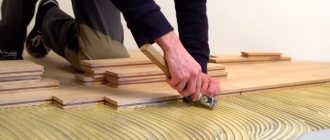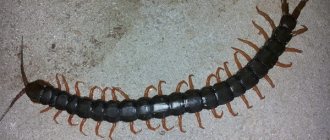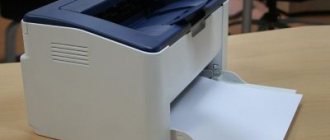“Keep your money in a savings bank,” said the hero of the famous film. This will not only save your savings from thieves, but will also save them from inflation. However, the Central Bank's reduction of the key rate scared away depositors. And many citizens still prefer to keep their money “in a box.” But they rightly fear that they may become victims of robbery. How to hide money so that no one finds it? And how not to hide them? You will find answers to these questions in this article.
Places where you should not hide money
Most people hide money in standard places. This is where criminals will look for money first.
This is not the first year that the top list of places that attackers check first includes:
- Table drawers, places under tablecloths, napkins. Even if you tape an envelope with money under the table, it will not be a surprise to thieves.
- Places under the bed, mattress, blanket. This is a list of places that are quite obvious to thieves. Attackers probe them first.
- Wardrobe, cabinets. Thieves will check the contents of cabinets, shelves, clothing pockets, and probe clothes. All items will be turned over, including underwear. They will not hesitate to check the contents of boxes with feminine hygiene products. Oddly enough, many ladies hide their money there when going on vacation.
- Hiding places between books or inside books. This is already a classic. Thieves will not be surprised by hiding places in cut-out book pages, or by banknotes hidden between the pages of a book. Even if you are the owner of a real home library, checking it with experienced thieves will not take more than 5 minutes.
- Containers with bulk substances, pots and other kitchen utensils. Even inexperienced and clueless scammers will check these items for money.
- Maintenance of household appliances. Thieves will check everything: microwaves, ovens, stoves, refrigerators, washing machines. After all, when going on vacation, most people hide money in unused household appliances.
- “Caches” behind baseboards, plumbing fixtures, radiators, paintings. These are also banal places to store money.
There is also an opinion that money should not be hidden at all. Allegedly, if they are in a visible place, then thieves will not even think about it. This is wrong. After all, a large wad of money will immediately catch your eye. In addition, even if thieves don’t get to the money, it can become a godsend for a child who will think that it is just another toy.
Knowing information about the places where a thief will go first, you can try to outwit him. Hide a small portion of your money in one of these places as a decoy. Perhaps the thief will think that this is the main hiding place. Then he will not look further. Of course, you can’t fool an experienced thief this way, but it’s easy to fool a novice thief. He will become nervous and will be happy about such a find.
We create unpleasant working conditions
To protect your savings, you need not only to know where it is best to hide them, but also to take into account certain nuances.
The main requirement of a thief when “working” is silence and the ability to search the premises for a long time. For example, knowing that the owners will arrive home only at 18:30 or have even left for a resort for a couple of weeks, he will leisurely look through every book, rip open all the soft toys, shake out flowers from pots, and inspect pipes. Of course, with this approach, he has every chance of discovering every cache - both fake and real. Therefore, it is necessary to deprive him of peace.
The easiest way to do this is with an alarm. There is no need to register with the police or security companies - this is quite expensive. But it’s quite possible to buy an inexpensive Chinese “alarm” that will respond to door openings with a deafening roar. The main thing is to hide it more reliably, so that it “screams” for at least half a minute, and is not turned off after a few seconds. This will immediately knock the thief out of his usual rut, make him nervous and quickly get out of the apartment.
Ideally, relations with your neighbors should be good enough so that when they hear the alarm, they come out to see what happened and whether your apartment needs help. In this case, you won’t even have to rack your brains about where it’s best to hide your finances from robbers.
How to hide money in an original way?
How to hide money so that thieves don't get to it? The answer is obvious: put them in a reliable bank and don’t worry. The funds on deposit are still insured for the amount of 1,400,000 rubles. Yes, and you will be charged interest. And most importantly, the money will not fall prey to a thief. However, no one has canceled the need to create a financial safety net. This is precisely what experts do not recommend keeping in a bank. It should always be at hand. How to hide it? Next, we’ll look at the most successful ways to store money at home.
Reliable protection
As for safes, this is a controversial place. If the burglar is a professional, he will find a way to open it. Also, some of them can be easily carried out due to their light weight and size.
A safe can be reliable protection if it is installed in a hard-to-reach place, which will prevent removal and require time and effort to open it.
Based on the above examples, we can conclude: popular places are the most unsafe. Presumably, that's where thieves will look first.
There are two types of thieves: random robbers who couldn't pass up easy money, and professional burglars who act on a tip and carefully study the object before the robbery. Pros will quickly find a hiding place in any apartment.
You can think about where to store valuables outside the home, or provide your home with maximum security. For example, bank safes are very popular now. But the downside of safes is that this is also not a 100% guarantee of reliability, since the bank does not know what is in the cell and cannot be responsible for its contents.
It’s logical to place money in a bank deposit: in addition to reliability, it also pays interest.
Cool story: They tried to steal, but a Doberman remained at home and mocked the thief.
Hides in niches
You can use a cornice, tabletop, or door as such a hiding place. But his equipment will have to work hard. To make a niche in the door, you will need to cut a small recess in it. And then you will need to close the recess so that it is not visible to prying eyes. Otherwise, all efforts will be in vain. But you don’t always want to spoil a door, especially a good one. And making such a niche is quite difficult from a technical point of view.
Kitchen table
You've probably noticed that almost every kitchen table has a side edging. Your task is to remove it with a screwdriver, then drill a hole (it will be flat, equal in height to the thickness of the table surface) and place the money there. Then you need to secure the edging to its original position. A hole in the table can be drilled and then trimmed with a jigsaw.
Inheritance: interesting facts about credit history. Are there many debtors in the Russian Federation?
Under the influence of other people: common mistakes when changing careers
Meta, formerly Facebook, is no longer among the world's ten most valuable companies
Original options for hiding places in banal places
You can try to make a non-obvious hiding place in an obvious place. For example, many people often hide money in the toilet tank. Trite? Yes. You can take this banal idea and hide your money in a slightly different way. For example, invest in a float on the tank (if there is one, of course). However, you can't hide too much money there. You should also take care that the money does not get wet.
You can also hide money in the refrigerator in an original way. To do this, they can be placed behind an elastic band.
Toilet
Surely you immediately thought of placing a bag of money and jewelry in the drain tank. This hiding place is already known to thieves, so there is no point in taking risks. You need to use a float that regulates the water level. Turn off the water, carefully remove it from the tank and cut it to make a storage container (for example, a pretty decent rolled up wad of money will fit in there). After this, glue the cut improvised lid with superglue or weld it using a lighter or soldering iron (the heated parts of the plastic will easily melt and stick).
Sockets
Sockets are indeed an original and safe place to store savings. It is unlikely that a fraudster will risk his own life and expose himself to the risk of being shocked. But when hiding money in this way, you should be extremely careful. To hide money in this original way, you will need to turn off the power to the wires, remove the socket cover and put your savings into the cavity. To avoid possible fire, valuables must first be wrapped in a special material that does not conduct current. Thus, this method is quite dangerous.
Or you can even make a dummy socket. But it is important to adapt it to a place so that it does not arouse suspicion.
Fridge
The refrigerator door closes tightly because there are magnets around the perimeter. There is a rubber braid on top. Carefully pull back the braid and make a small cut, removing some of the magnets that are divided into segments. Place your savings into a cavity made of thin material (you can even break it with your hands) and cover the hole with braid. Even if thieves are tempted by the refrigerator, they still will not find your well-hidden hiding place in it. This is a joke, since the refrigerator is an electrical appliance that is rarely taken out during a robbery. There is another advantage of this cache. You can easily use the refrigerator in your hotel room if the hotel does not have a safe for storing money. And don’t feel guilty, because, firstly, you didn’t damage the property (the refrigerator will still work and close tightly). And secondly, the hotel management must take care of the safety of the property of its guests. And if it doesn't, then guests have to worry about themselves.
Water pipe
You can hide money in the toilet or bathroom. It is proposed to use a dummy water pipe as a hiding place. There are already so many different pipes in bathrooms, so one extra one will not arouse suspicion. Just roll up the money carefully and put it in the pipe. Carefully screw the pipe next to the others. It is unlikely that even a single thief would think of looking for a dummy pipe, much less unscrewing it.
Cornice
If your home does not have round curtain rods (very often these are used in certain interior design styles), pay attention to the curtain rod that holds the curtain in the bathroom. Such a “pipe” will definitely be hollow inside, so there is nothing easier than removing the side holder and placing a rolled up stack of bills in the ledge. Since it is possible to fold valuables on both sides, be sure to take advantage of it (for example, you can fold not only money, but also jewelry placed in a small bag or pouch).
Suspended ceiling
If you do not use suspended ceilings in your interior, it means that you will not be able to appreciate the hiding place in which you can store many valuable things. And if you already have a plasterboard ceiling, you can easily put everything you consider valuable there. There is always space between the ceiling itself and the plasterboard, since the sheets are attached to profiles and not to the ceiling itself. This space is quite enough to make a very convenient hiding place. To prevent the drywall from sagging, place a piece of plywood or thick cardboard on it, and place your valuables on top. Try to make sure that your dismantling is not visible. Thieves will not physically be able to check the entire ceiling (most likely, they will not have much time at their disposal), and your valuables will remain safe and sound.
Don’t be afraid to use your imagination when it comes to preserving what rightfully belongs to you.
Found a violation? Report content
Bright box
This is an interesting scheme of psychological deception that will work against a thief. The brightest and most prominent things are considered last. If a person wants to hide something, then he should put it in the most visible place. The brain does not focus on the most open places, because it is looking for secret ones. This is how this scheme works.
The funds can be placed in a noticeable box, and then placed directly on a shelf in the hallway. As a rule, in Feng Shui it is a symbol of wealth, which means that it has a dual purpose: a repository for funds and a talisman.
You can come up with many options for where to hide your funds. The main thing is to choose the right place, which not a single family member knows about, and not a single thief will think of.
4.7/5 — (24 votes)
Bathroom and restroom: first aid kits
A first aid kit can be attractive to burglars for a variety of reasons. First, a number of prescription drugs can be resold on the pharmaceutical black market. Secondly, citizens often hide their savings or family jewelry among hygiene supplies. Thirdly, some medications can be used by the robbers themselves (for example, if the thief is a drug addict).
Massive furniture
Many people use their heavy or massive furniture as a kind of hiding place. This is especially true for furniture that stands close to the wall. It is enough to simply put the funds in an envelope, and then attach it behind the furniture with double tape, that is, you need to move the massive cabinet, attach the treasured envelope to the wall and push this entire structure back.
A sofa would also work. We move it away in exactly the same way, attach the envelope to the wall and secure it. You can secure the envelope not behind the sofa, but under its base. However, it is necessary to choose a good adhesive tape that will firmly hold the resulting structure.
Note! This is relevant for those apartments in which neighbors can be clearly heard. A thief will not move the furniture, because this may attract neighbors.











